SOUTH TEXAS FARM & RANCH SHOW

How carbon can impact agricultural production, Page 10
October 23-24, 2024 | Victoria Community Center | Victoria, Texas


How carbon can impact agricultural production, Page 10
October 23-24, 2024 | Victoria Community Center | Victoria, Texas
BY MATT BOCHAT
The South Texas Farm & Ranch Show continues to be the longest running (started in 1982) non-profit regional farm and ranch show in South Texas. In 2024, it will enjoy its 40th year of success by providing quality, relevant, education for farmers, ranchers, agribusinesses, and the general public.
Originally, local volunteers and Texas A&M AgriLife Extension organized the South Texas Farm and Ranch Show. The show is now managed by a group of dedicated volunteers and AgriLife Extension personnel who serve on the South Texas Farm & Ranch Show Committee. Since its inception, the show has grown and continually provides scholarships to local and area high school students that are pursuing agriculture related degrees. Since 1991, over $350,000 has been awarded in scholarships to over 230 students in Victoria and surrounding counties.
“In general, people in America are two to three generations removed from the family farm,” says Matt Bochat, County Extension Agent of Agriculture/Natural Resources for Victoria County. “Agricultural illiteracy is at an all-time high. Therefore, this year’s show will focus on agricultural advocacy to bring to the surface relevant, factual information about the agricultural industry.”
The show dates are scheduled for Oct. 23-24, and the event will be held at the Victoria Community Center. Both days will feature keynote luncheon speakers including Dr. Jacquelyn Prestegaard-Wilson, Extension Livestock Sustainability Specialist, on Oct. 23. Dr. Katie Lewis, Associate Professor of Soil Fertility will speak on Oct. 24. Dr.

Wilson will present “The World of Beef Sustainability,” and Dr. Lewis will touch on “Understanding Beef Carbon Credits.”
One of the biggest draws to the farm and ranch show is Cattleman’s College, and event to be held on Wednesday, Oct. 23. Speakers will focus on a variety of topics including grass identification, beef sustainability, pasture & forage management, beef perception, economics, marketing and understanding your ag exemption, plus much more.
Day one also offers a row crops segment featuring crops research, integrated pest management, herbicides and more. Finally, day one will conclude with wildlife sessions covering native plants for quail research, feral hog control and managing rangeland for white tail deer.
Thursday, Oct. 24, will be dedicated to pesticide applicator recertification. All pesticide applicators including private, non-commercial and commercial, are required to get a certain number of continuing education units (CEU’s) to retain their license. Topics for the day will include IPM strategies, ranch man-
agement solutions, pesticide compliance, pesticide laws and regulations and water issues and readiness in agriculture.
Thursday morning, the show will also offer an opportunity for those wishing to obtain a pesticide applicator’s license from the Texas Department of Agriculture through the Pesticide Applicator Training program. This training is required before an applicant can sit for testing to receive a private applicators license.
Only the training is offered for pesticide applicators. The test is administered by a third-party vendor of the Texas Department of Agriculture with those exams given off site. Training materials can also be purchased for $40 at the show or at the Extension office. If you plan to attend this training, the show asks that you call the Victoria County Extension Office to ensure that we have adequate materials. The cost of the training will be $20.
The South Texas Farm and Ranch show added a new section to Thursday afternoon’s agenda called Women in Agriculture. This section will feature Mrs. Christi Short from the Cotton Board, who will discuss op-
portunities for women in this field. Following her will be Mrs. Lindsey Bowers from United Ag and 5B farms discussing working in agriculture for success.
The South Texas Farm and Ranch Show is also known for a very diverse and informative trade show. This year is no exception. There will be approximately 120 booths displaying all kinds of agricultural information, equipment, and demonstrations.
Farm and ranch equipment will be on hand for displays and demonstrations. Antique farm tractors and equipment will be available for viewing and pictures.
Registration for all the educational programs will begin at 6:30 a.m. at the main entrance to the Community Center and will cost $40/person/ day, which will include the lunch program.
Entrance into the trade show is free. A total of 14 CEUs for private, non-commercial and commercial pesticide applicators will be available in the two-day show.
For information about the show, call the Victoria County Office of Texas A&M AgriLife Extension at (361) 575-4581.


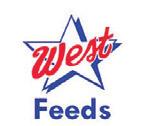






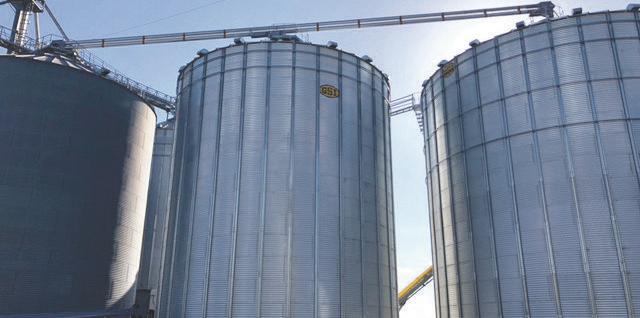



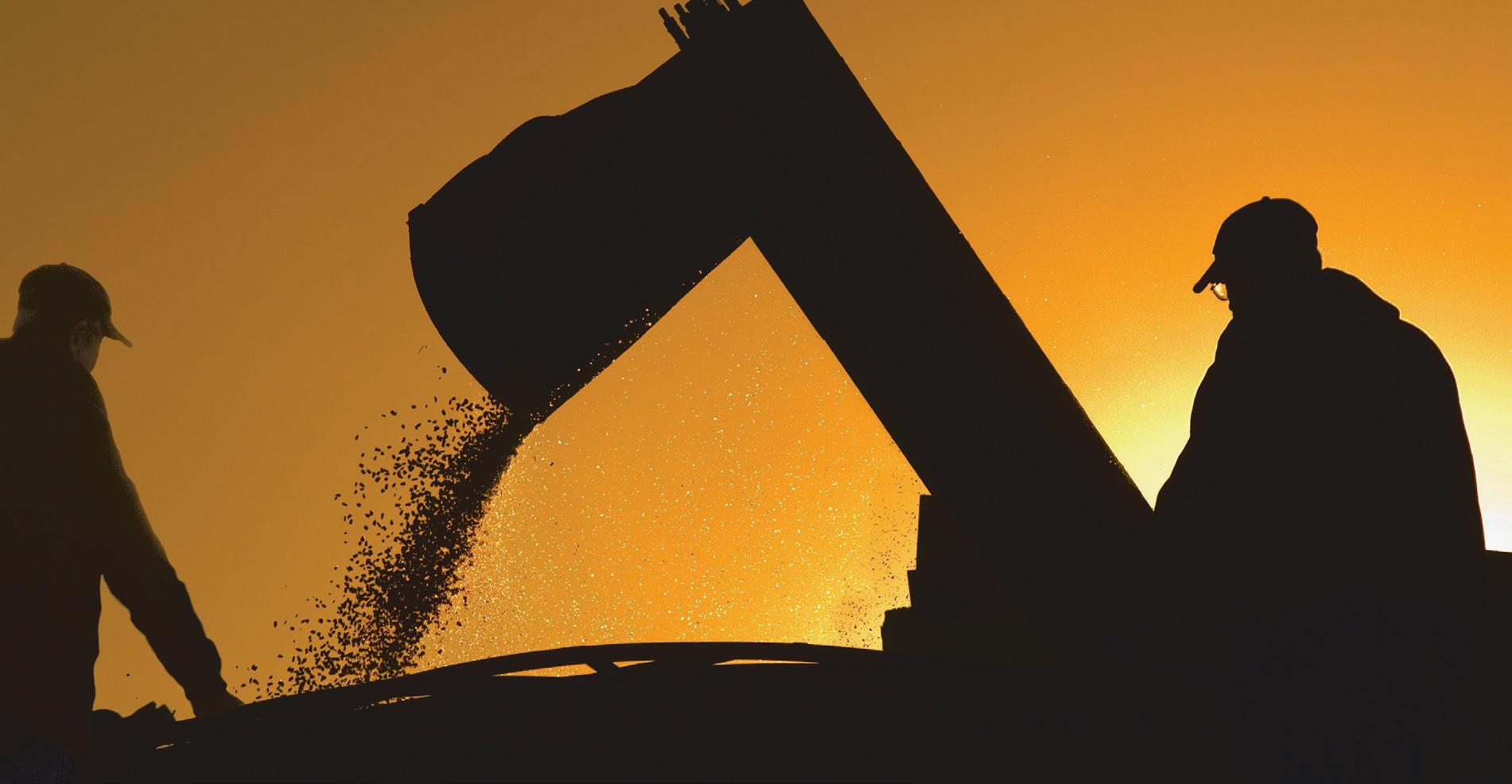



Eliminating feral pigs’ destructive impact ........... Page 15
Broadleaf weed control ....................................... Page 16
Bobwhite Harvest Project .................................... Page 17
Victoria Central Appraisal District ........................ Page 18
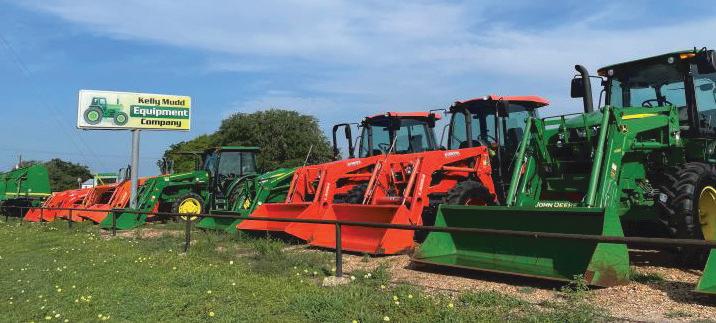
1. Prosperity Bank
2. AG Southwest Crop & Rainfall Insurance
3. Apollo Ag Technologies
4. Medina Agricultural Products Inc.
6. Texas Farmers Union
7. Victus, LLC
9. Farm + Ag CPA
10. Victoria Electric Cooperative
12. StoneX Group Inc. FCM Division
13. Omya Inc.
14. Blessed Bull @ the Ranch
15. Helena Agri-Enterprises, LLC
16. Corteva AgriScience
17. Dan’s Gourmet Beef Jerky
21. Mix 30
22. TrustTexas Bank
23. Callicrate Banders
25. Re-Bath
26. Independent Cattlemen’s Association of Texas
27. Postive Feed Ltd
28. Trull Service Company
30. Purple Wave Auction
31. USDA-Natural Resources Conservation Service
32. USDA Farm Service Agency
33. Victoria Soil & Water Conserva-
tion(SWCD)
35. Viatrac Fertilizer LLC
36. Victoria Farm & Ranch Supply Co.
37. VCS Companies
38. Texas Beef Council
40. Maverick Metal Buildings
41. JAG Metals LLC
42. San Antonio Steel Co.
43. Generator Supercenter
44. Ag Resource Management
46. Hospice of South Texas
47. Victoria Advocate
50. Lazy B Ag Management, LLC
51. CW Fritcher Ent. Inc.
52. P & S Scale Co. Inc.
53. Agoro Carbon Alliance
54. Live Oak Beefmaster Breeders Association
58. American Water
59. C S Nutrients
63. Texas Department of Agriculture
64. Ryker Tools
65. Promised Land Outdoors
66. Stay-Tuff Fence
67. Alleviate LLC
68. Ful-O-Pep
69. Texas A&M AgriLife Extension —
DAR
70. Texas SeaGrant program of Texas A&M
71. Victoria Dodge Chrysler Jeep RAM
73. Pierce Corporation
75. Lewis Cattle Oilers
78. Marek Ag
79. Bastrop Scale Company
125. HOLT CAT
136. SM Fab INC
211. MW Rentals + Services
222. S & A Trailer Sales, LLC
225. MBJ Ranch
226. Victoria County Farm Bureau
110-1. Bobcat of Victoria
112-3. Southern Field Maintenance
114-5. Scherer Kubota
116-8. Arrow E Services, LLC
126-7. Camacho Tractor &Eqpt Repair, LLC
128-9. Scherer Kubota 130-1. Dales Fun Center
133-5. Camacho Tractor &Eqpt Repair, LLC
141-2. Martin Till 201-3. Rock’R Farm and Ranch
207-210. LAG Industries, LLC
213-4. Shoppa’s John Deere 215-218. Hlavinka Equipment Co. 219-20. Victoria Farm Equipment Company, Inc.
223-4. Hylio, Inc.
227-8. Mannas Precast Concrete, LLC
34+221. Warfield Fabrication 48-9. Capital Farm Credit 76-77. Warriors Weekend



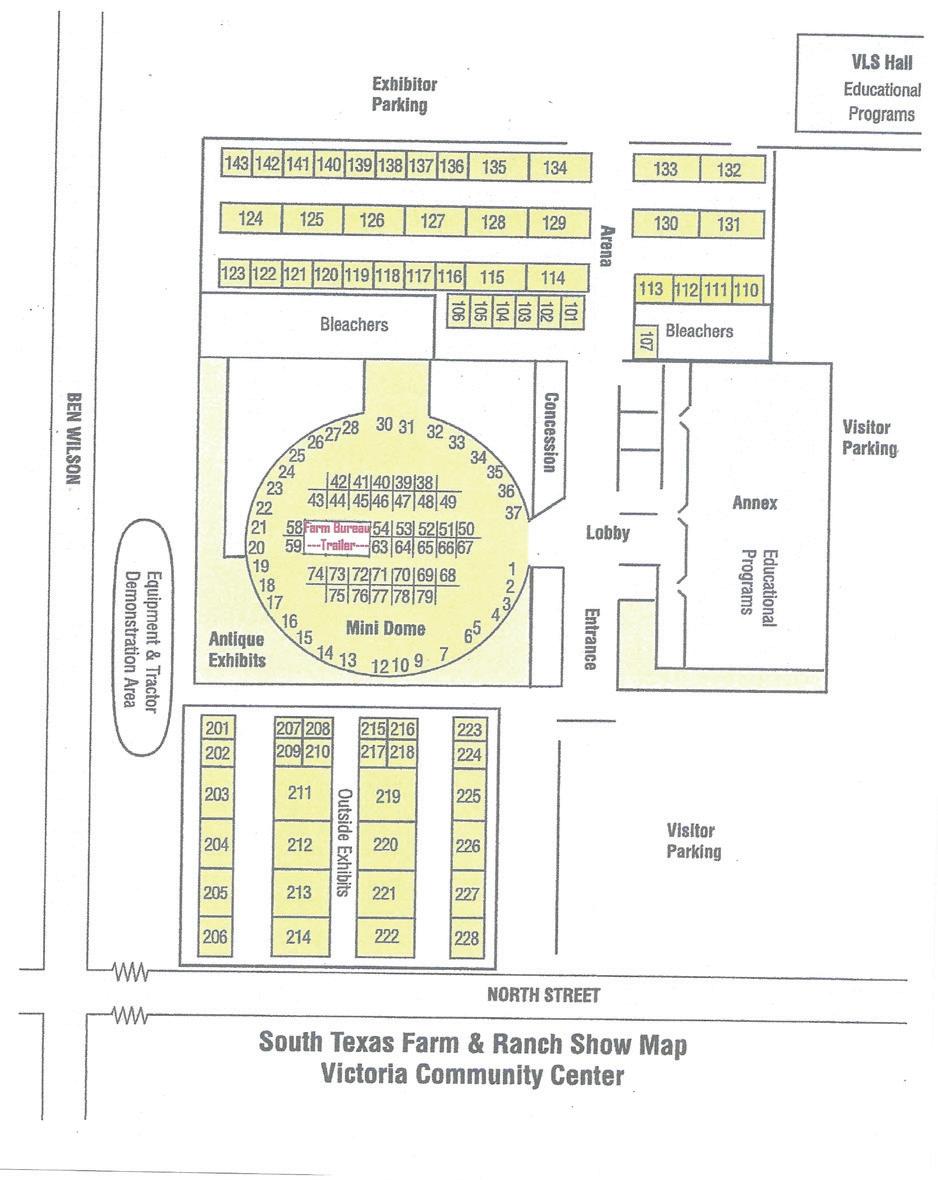
The South Texas Farm & Ranch Show awarded scholarships totaling $19,000 to seniors in 2024, including $11,500 in academic scholarships. Since 1991, the show has awarded $338,000 to high school seniors pursuing degrees in the agriculture field, show officials said.
Madison Meyer received the $1,750 Mark Scherer Scholarship. She is the daughter of Molly Meyer. She is a graduate of Cuero High School. Madison is attending Texas A&M University, majoring in Animal Science.
Nicole Brown received the $1,500 Melvin Scherer Scholarship. She is the daughter of Bridget Brown. She is a graduate of Calhoun High School. Nicole is attending Blinn College, majoring in Agricultural Marketing and Business.
Maggie Rempe received the $1,500 John Stockbauer Jr. Scholarship. She is the daughter of Mike and Lori Rempe. She is a graduate of Yoakum High School. Maggie is attending Eastern Oklahoma State College, majoring in Agribusiness and Animal Science.
Rylee Vancura received the $1,500 Jock Ross Scholarship. She is the daughter of Martin Vancura and Joni Anderle. She is a graduate of Shiner High School. Rylee is attending Tarleton State University, majoring in Animal Science.
Cameron Capistran received the $1,500 David Dierlam Scholarship. He is the son of Roland and Jo Ann Cap -



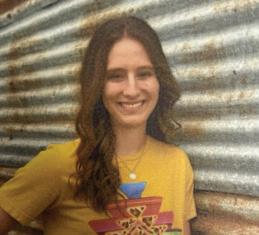

istran. He is a graduate of Goliad High School. Cameron is attending Blinn College, majoring in Poultry Science.
Bailey Zeplin received a $1,250 academic scholarship. She is the daughter of JC and Amy Zeplin. She is a graduate of Victoria West High School. Bailey is attending Texas A&M University, majoring in Animal Science.
Truitt Luddeke received a $1,250 academic scholarship. He is the son of Tyler and Amanda Luddeke. He is a graduate of Cuero High School. Truitt is attending Texas A&M University, majoring in Agriculture Systems Management.
Olivia Sommerfeld received a $1,250 academic scholarship. She is the daughter of Justin and Elizabeth Sommerfeld. She is a graduate of Edna High School. Olivia is attending Texas Tech University, majoring in Family and Consumer Sciences.
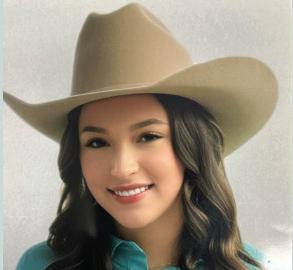



Kilea Schaffer received a $1,250 opportunity scholarship. She is the daughter of Donald Schaffer and Candance Whittley. She is a graduate of Edna High School. Kilea is attending Sam Houston State University, majoring in Animal Science.
Emma Davis received a $1,250 opportunity scholarship. She is the daughter of James and
Teena Davis. She is a graduate of Shiner High School. Emma is attending Tarleton State University, majoring in Biology.
Lucia Carrera received a $1,250 opportunity scholarship. She is the daughter of Julian and Taide Carrera. She is a graduate of Edna High School. Lucia is attending Sam Houston State University, majoring in Plant and Soil Sciences.
Kathleen O’Brain received a $1,250 opportunity scholarship. She is the daughter of Mike and Teresa O’Brain. She is a graduate of Edna High School. Kathleen is attending Victoria College, majoring in Agriculture Science.
Darcy Leinen received a $1,250 opportunity scholarship. She is the daughter of Robert and Sally Leinen. She is a graduate of Cuero High School. Darcy is attending Texas A&M University, majoring in Horticulture.
Abbie Migl received a $1,250 opportunity scholarship. She is the daughter of Troy Migl and Shelly Gaskin. She is a graduate of Victoria West High School. Abbie is attending Texas State University, majoring in Animal Science.




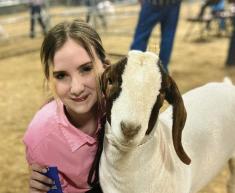
WEDNESDAY, OCT. 23
Annex 1&2
CATTLEMEN’S COLLEGE I
CEU Credit 1 drift, 2 general
7 -10 a.m.
Plant identification contest
Picolinic acid training (Invora)
Dr. Stacy Hines, AgriLife Extension
Pasture & Hay Field Weed Management Alternatives
Dr. Josh McGinty, AgriLife Extension
Understanding your Ag Exemption
Mrs. Keri Wickliffe, Victoria County Appraisal District
Moderator – Dr. Stacy Hines Annex 4
CROPS MANAGEMENT
CEU Credits: 1 Drift, 1 IPM
Cropping System Management for Herbicide Drift
Dr. Josh McGinty, AgriLife Extension
Cropping System Management for IPM
Mr. Stephen Biles, AgriLife Extension
Moderator — Mrs. Hailey Hayes, AgriLife Extension
10 A.M. - TRADE SHOW OPENS
11:30 A.M.-LUNCHEON – Dr. Jacquelyn Prestegaard-Wilson, Texas A&M AgriLife Extension “Beef Sustainability”
Annex 1 &2
1:30-4:30 p.m.
CATTLEMEN’S COLLEGE II
CEU credits: 1 General
Keeping the Cow Herd Healthy
Dr. Karl Harborth, AgriLife Extension Beef Checkoff at Work
Mr. Kaleb McLaurin, Texas Beef Council
Beef Cattle Marketing Outlook
Dr. Yuri Calil, AgriLife Extension
Moderator — Dr. Karl Harborth Annex 4
Wildlife
CEU Credit: 3 IPM
Managing Feral Hogs
Mr. Jay Long, Texas A&M Natural Resources Institute
Bobwhite Harvest Research in South Texas
Dr. D. Abraham Woodard, CWB, East Foundation
Whitetail Deer Management & Habitat
Dr. Jacob Dykes, AgriLife Extension
Moderator — Dr. Jacob Dykes
6 P.M. - TRADE SHOW CLOSES
THURSDAY, OCT. 24
Annex 1&2
7 -10 a.m.
TDA LICENSE RECERTIFICATION I
CEU Credit: 1 Laws & Regs, 2 Drift
Pesticide Compliance Issues
Mrs. Melissa Barton, Texas Department of Agriculture
Innovative Pasture Management Concepts
Mr. Brian Cain, Envu Range & Pasture Specialist
Broadleaf Weed Control in Pastures
Mr. Bryce Macdonald, Corteva Agri-Science
Moderator – Mr. Greg Baker, AgriLife Extension
Annex 4
7-11 a.m.
PESTICIDE APPLICATOR TRAINING
Mr. Brian Yanta, AgriLife Extension
10 A.M. - TRADE SHOW OPENS
11:30 a.m. — Luncheon – Dr. Katie Lewis, Texas A&M AgriLife Research “Understanding Carbon Credits”
Annex 1&2
1:30-4:30 p.m.
TDA LICENSE RECERTIFICATION II
CEU Credits: 1 Drift, 1 Laws & Regs, 1 IPM
Texas Water Issues
Mr. Lucas Gregory, Texas Water Resources Institute
IPM Strategies For Agriculture
Mr. Stephen Biles, AgriLife Extension
Pesticide Laws & Regulations
Dr. Mark Matocha, AgriLife Extension
Moderator – Mr. Stephen Biles
1:30-4:30 p.m.
Annex 4
WOMEN IN AGRICULTURE
Cotton Board for Women in Ag
Ms. Christi Short, Regional Communications Manager, Texas Cotton Board
Working in Agriculture for Success
Ms. Lindsey Bowers, Grain Merchandiser, United Ag, 5B Farms
Moderator — Mrs. Hailey Hayes, AgriLife Extension
5 P.M. - TRADE SHOW CLOSES
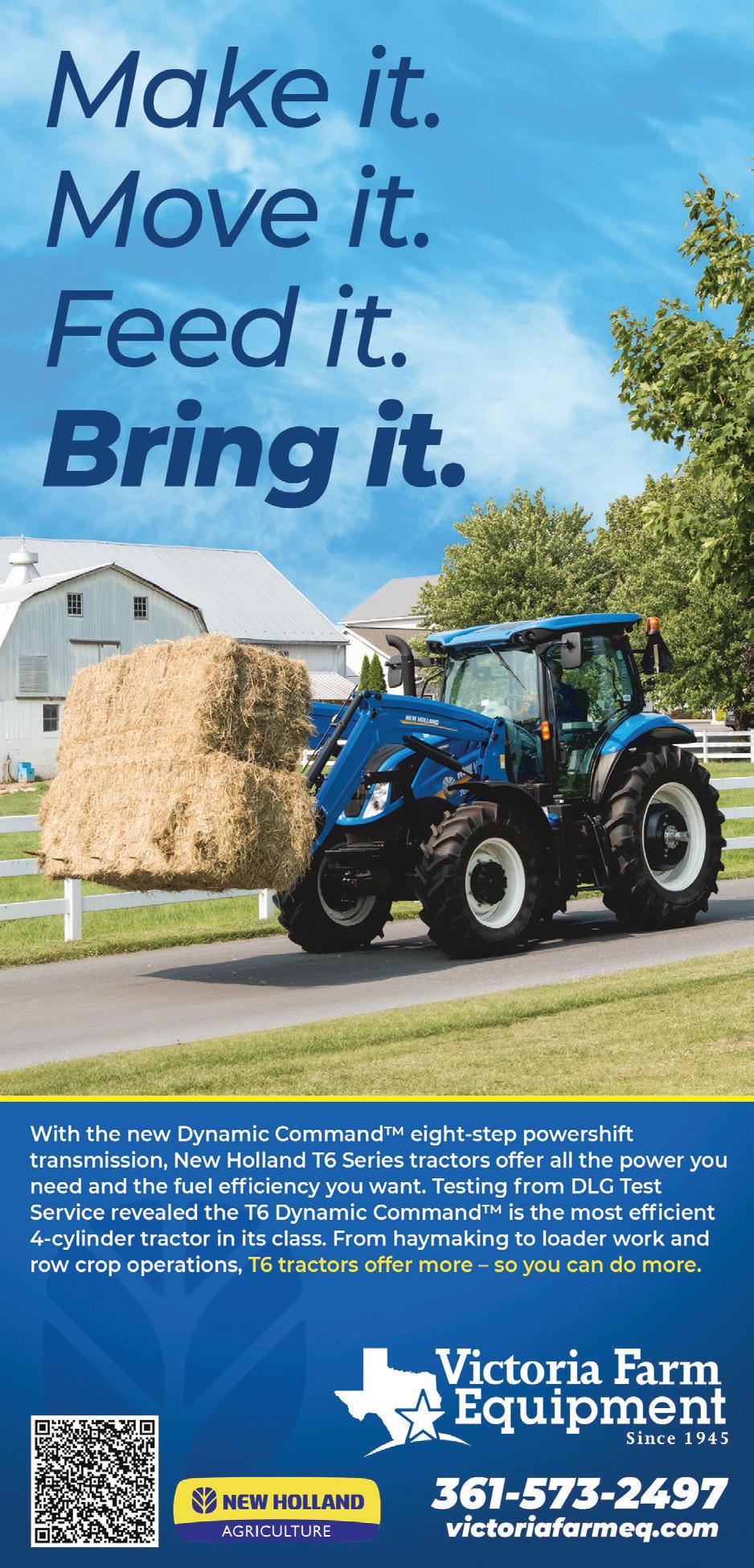
BY SHAWN A. AKERS ADVOCATE MANAGING EDITOR
Victor Eder has been involved with the South Texas Farm and Ranch Show for more than 35 years. He has served as secretary, chairman, vice chairman, facilities chairman and now in his current position as treasurer, and he keeps coming back year after year for many reasons.
One of those is his work with the South Texas Farm and Ranch Show Golf Tournament, where some of the proceeds provide scholarship money for students interesting in pursuing a career in agricultural education.
“We do about $19,000 in scholarships a year for the Farm and Ranch Show, and the golf tournament
generates about 35% of that,” Eder says. “The scholarships are awarded to students from Victoria County and any surrounding counties.
The 21st annual golf tournament, with a scramble format, is set to begin at 1 p.m. Tuesday, Oct. 22, at The Club at Colony Creek in Victoria.
One of the most satisfying aspects of Eder’s connection with the golf tournament is the feedback that comes from the students who benefit from the scholarship money.
“We get numerous thank you notes from the kids,” Eder says. “We take pride in seeing those kids–some from 30 years ago–who have come back to their communities and have become very productive citizens. The scholarship they received


helped them to further their education and to come back and make an impact in the community, and they are very grateful for that. We have helped a lof of students along the way.”
Students from Jackson, Calhoun and Victoria counties received scholarships in 2023.
Eder says the golf tournament is open to anyone who wishes to participate and to help build the area’s future by contributing to the scholarship fund.
Since 2001, nearly $350,000 in scholarships have been awarded to area students. Eder says the awarding of scholarships is not limited to students who plan to attend a fouryear college.
“They can attend technical schools, but their main interest must be in agricultural education,” Eder says.
The fee to enter the tournament is $400 per team, or $100 per player. Most of the entry fee will go toward green and cart fees, food, beverages and prize money, tournament chairman Gill Dollins says.
Hole sponsorships are also being solicited to raise additional funds for scholarships. Sponsors will be given first priority to enter a team in the tournament, and sponsor signs will be displayed on the tee boxes.
The tournament, Eder says, offers South Texas Farm and Ranch Show participants an opportunity to unwind before the show begins.



BY DR. KATIE LEWIS
Carbon (C) is one of the most ubiquitous elements in the entire universe when it is transformed from one state to another.
The amount of carbon dioxide (CO2) in the atmosphere is of major importance (and concern) when it comes to climate variability and rising temperatures. This has a direct and potentially negative impact on agricultural production and society as a whole.
Additionally, agriculture may play an important role in C capture by plants and storage [sequestration] in soil, offsetting potential climate impacts. Many inherent environmental factors contribute to the long-term sequestration potential of a farming operation. These factors include soil texture, cropping system, and precipitation/irrigation amounts.
The research to be discussed aims to establish baseline soil organic C levels across four major growing regions of Texas: Gulf Coast Prairies, Blackland Prairies, Rolling Plains, and High Plains. Precipitation/irrigation amounts and soil texture drive greater C capture and storage, respectively. For example, regions such as the Gulf Prairies and Blackland Prairies with heavier textured, clayey soil and in an area receiving greater rainfall tend to have greater organic C. Due to this, regional approaches need to be considered as it pertains to C.
Management strategies (e.g., crop rotations, cover crops, tillage, and grazing) providing greater potential for building organic C will be discussed at the 2024 South Texas Farm and Ranch Show. The benefits of greater soil organic C go beyond C markets and policy and might include improving soil structure, enhancing microbial activity and nutrient cycling, and optimizing water availability. Physical, chemical and biological improvements can increase the longevity of farming operations, agricultural production and rural communities across the state of Texas.
Dr. Katie Lewis is an Associate Professor of Soil Fertility and Chemistry at Texas Tech University in Lubbock.

BY BRIAN CAIN
Ranchers and land managers seeking effective solutions for invasive brush species will have a valuable opportunity to learn from an industry expert at the South Texas Farm and Ranch Show.
Brian Cain, Southern U.S. Account Manager at Envu, will present “Invora: Redefining the Industry Standard in Mesquite and Huisache Control” during the morning session on Oct. 24.
With nearly 40 years in the industry, Cain brings a wealth of experience and expertise to his presentation. His focus will be on Invora™, an innovative herbicide that offers groundbreaking solutions for controlling mesquite and huisache, two of the most challenging brush species in Texas.
These invasive plants are more than just a nuisance; they significantly reduce the quality of rangelands. This has long been a battle for ranchers, involving a variety of control methods, many of which are costly and offer only short-term solutions.
Invora, a patent-protected combination of aminocyclopyrachlor (ACP) and triclopyr, is a restricted-use pesticide designed for certified applicators. Cain says ACP comes to the forefront of this herbicide’s effectiveness.
“ACP is the newest, most active compound for post-emergence brush control,” Cain says. “And unlike other chemicals on the market, Invora actually kills mesquite and huisache for the long haul.”
Cain’s journey with ACP began when he first observed its remarkable efficacy in field trials around
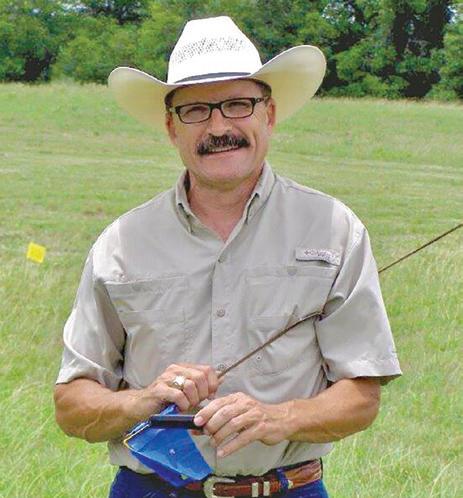
2005, when he was working at a distributor for range and pasture products.
“I’ve been around long enough to know that most applications look pretty good for about a year, sometimes a year and a half,” Cain says.
“But I watched those trials for four years and they were outstanding.”
Driven by the potential of ACP, Cain says he spent the next part of his career “chasing that molecule.” He first joined DuPont, which originally owned the chemistry. When it was sold to Bayer Crop Science, he followed it to help support Bayer’s efforts to get an EPA registered label.
After years of hard work, Bayer eventually proved successful; Invora herbicide was first introduced to the market in 2020, specifically labeled for use on privately-owned, non-hayed rangeland and perennial grassland managed as rangeland in Texas, Oklahoma, New Mexico, and Arizona. The following year, Bayer sold its Environmental Science business, which became Envu. Once again, Cain followed that molecule.
Real-World Success
Now, nearly 20 years after Cain
was first amazed by ACP, he’s excited that some customers are finally getting to see proof of what he’s long known.
“Invora has been out for four years now, and early adopters are stunned by its long-term effectiveness,” Cain says.
“With tough brush, it takes at least three years to know for sure if it’s really dead. Many ranchers don’t even spray for mesquite or huisache anymore because, in their previous experience, chemical treatments will suppress the brush, at first. But everything starts to grow back after two years. Now, they’re really starting to see the Invora difference compared to what was available before.”
Envu believes in Invora so much that it offers an unprecedented “Long-Haul Guarantee” when it’s applied in conjunction with the RangeView digital platform. Envu guarantees no more than 10% canopy cover of huisache five years after application; for mesquite, the guarantee is no more than 5% canopy cover after five years. If a treated area exceeds these specifications, Envu will cover 100% of the application cost, adjuvants, and Invora required for re-application.
Cain’s presentation at the South Texas Farm and Ranch Show promises to provide valuable insights for ranchers and land managers looking to improve their rangeland productivity.

BY JAMES DAVID HERD
Closing out the South Texas Farm & Ranch Show on Thursday, Oct. 24, at 1:30 p.m., Christi Short, the regional communications manager of the Cotton Board, will host a session.
“Cotton Board for Women in Ag” is only one of three sessions included in the “Women in Agriculture” block, and Short says the bulk of the session will be more of a general overview of the Cotton Board. It is expected to cover the personnel that makes up the Cotton Board, the various kinds of activities done in collaboration with the different departments at Cotton Incorporated, and will highlight the consumer campaign commercials that began earlier in 2024.
“[I’d like to] highlight some of the different brands and retail partnerships that Cotton Incorporated has had throughout the year,” Short says. “And then I will talk a little bit about what I feel like women—and really anybody in the industry—can do to help us spread the good word of what cotton farmers are doing.”
The Cotton Board, Short says, is a national organization serving as an arm of the Cotton Research and Promotion Program. The program’s website says its “Ongoing goal is to develop, fund and implement a coordinated plan of research and promotion designed to strengthen Upland

with its stockholders and informs them of what specifically the program is doing on their behalf.
Short also commented on a shift being seen in the cotton industry, that women have shown a more significant presence recently.
cotton’s competitive position and to maintain and expand domestic and foreign markets and uses for cotton.”
“We are a federally mandated check-off program for US Cotton, so we do have USDA oversight,” Short says. “And then at the Cotton Board, we collect the financial assessment that’s on every bale of Upland cotton ginned in the United States. We also collect a similar assessment on the cotton content of imported goods into the United States.”
Short says the Cotton Board then communicates
“I feel like over the last several years—maybe the last decade or so—we are seeing more and more women be the farmer,” Short says. “As before, the woman was the spouse of a farmer, the woman only worked in the home; maybe there [were] women [who] worked in the gin office as a secretary, but we’re seeing more and more women actually be the farmer. Whether they’re a partner with their spouse, whether they’re a partner with a family member, whether they farm solely on their own. Maybe they manage a cotton gin, maybe they’re a manager or a director in some sort of industry partner. There’s even more women researchers out in the field that you probably didn’t see a couple of decades ago.”
Short says there isn’t anything attendees need to know specifically before attending her session, but she encourages readers to soak up as much information as possible from the other sessions.
“There’s some really good information to come out on water, there’s some really good strategies, some really good research I think we’ll hear about,” Short says.
BY CHRISTOPHER GREEN
The Texas A&M AgriLife Extension Service will continue to offer private applicator pesticide license training at the 2024 Texas Farm and Ranch Show in Victoria. This course is designed for pesticide applicators in Texas that want to obtain a pesticide license.
It provides crucial information that will prepare them to take the Private Applicator Exam by the Texas Department of Agriculture and administered by PSI Services.
A private pesticide applicator is someone who uses or supervises the use of restricted-use or state-limited-use pesticides or regulated herbicides to produce an agricultural commodity on personally owned property, rented property, property

applied without compensation, other than the trading of personal services between producers of agricultural commodities.
Brian Yanta, a Goliad County Extension Agent with the Texas A&M AgriLife Extension Service, will host the pesticide applicator training. He says the program will train people on anything that is a restricted or limited use pesticide.
garding the use of pesticides and how to properly use them without harming the environment.
owned by his or her employer, property under his or her general control or the property of another person if
“It’s important to remember that the training includes all sorts of things that pesticides can be used for,” Yanta says. “This includes fungicides, insecticides and even rodenticides and, of course, herbicides are the most popular thing that people put on their farming ranches.”
The training course will teach people about the laws and regulations re-
“We want to protect the environment,” Yanta says. “We don’t want people spraying just to spray, so that’s a large part of the training. Then, we follow up with some actual identification of plants and pests and rodents and predators. We want to make sure people are putting out the right amount of product for a number of reasons. One is, again, for the environment, but number two, for the people’s pocketbook. You don’t want to be putting out too much and wasting money, and you don’t want to be putting out too little so the time you spend spraying is for nothing. Calibration is another part of the course that we will cover that day.”
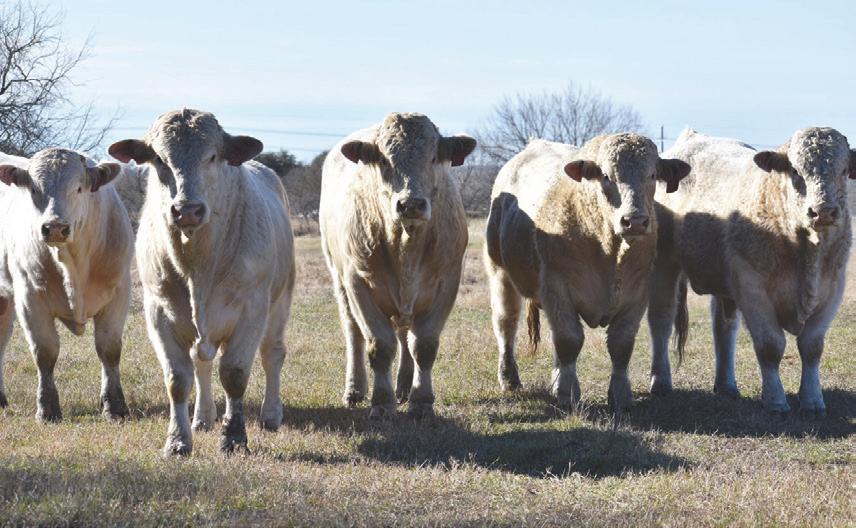
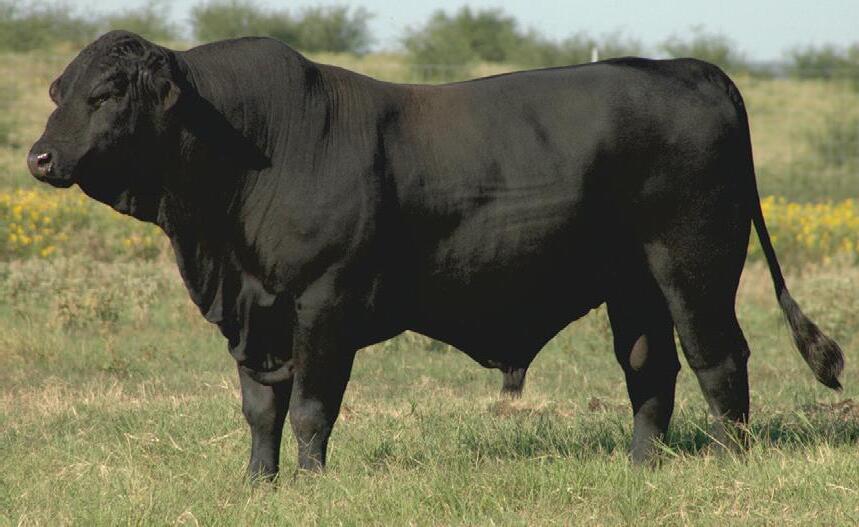

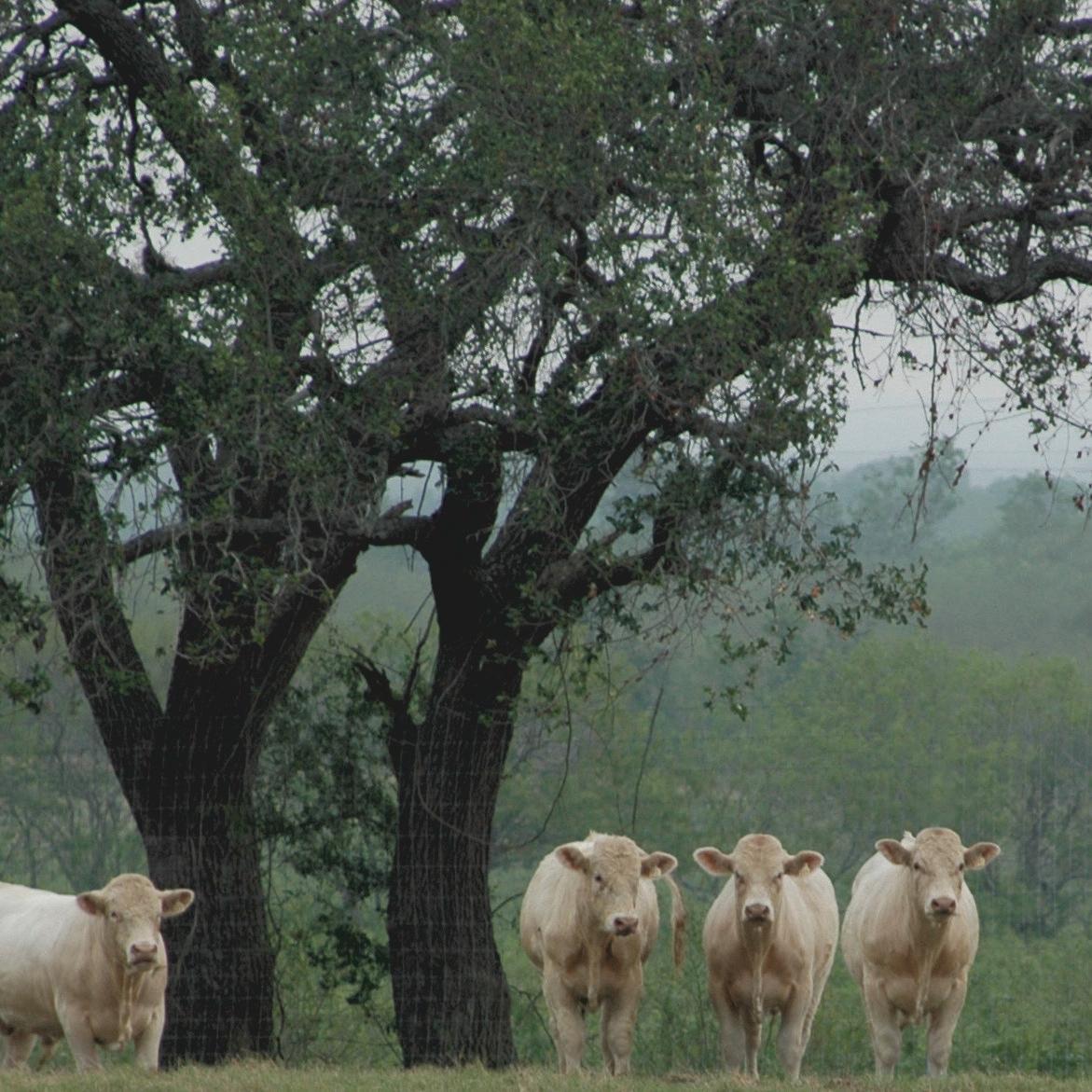
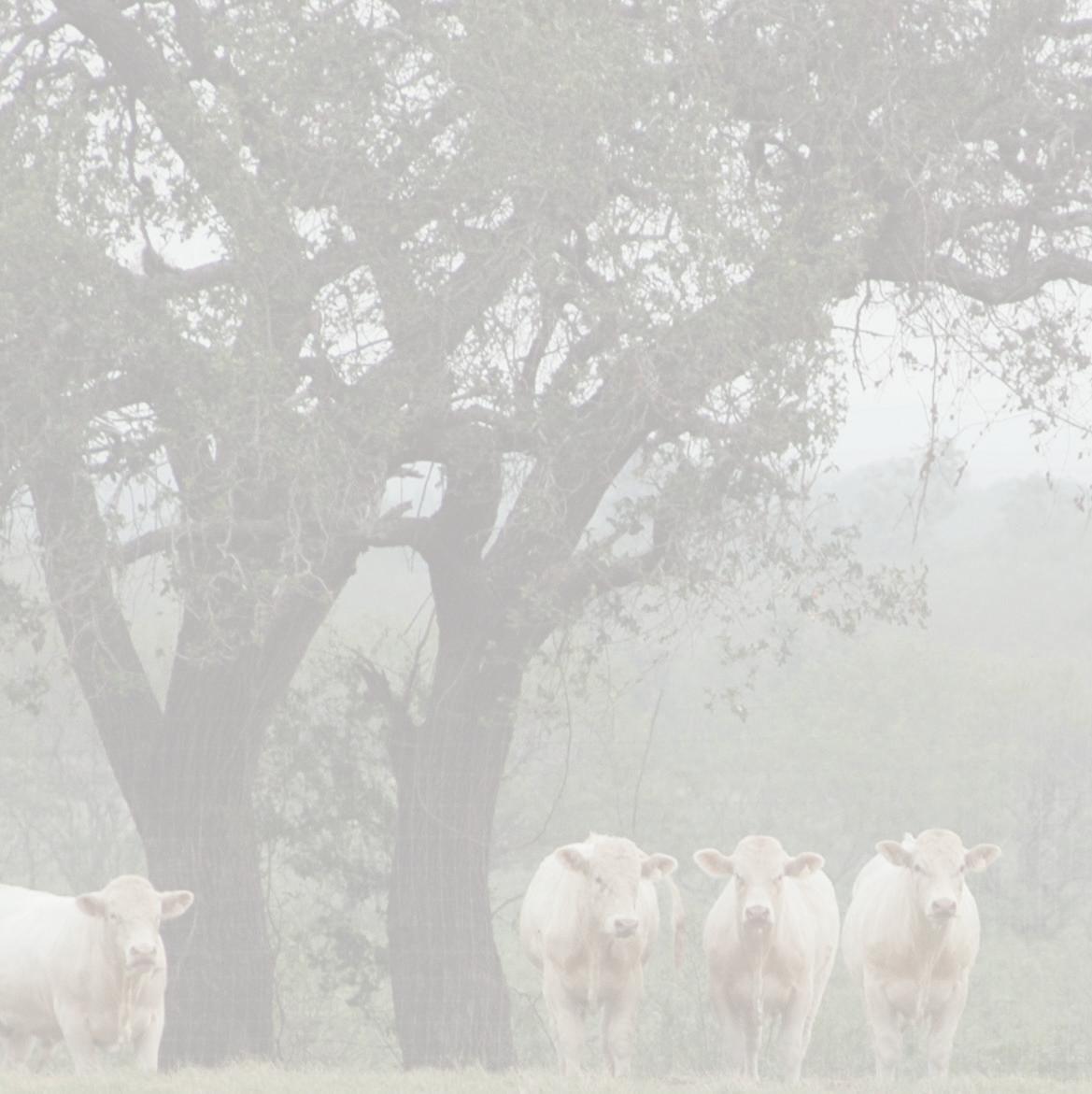
BY DR. MARK MATOCHA
Many agricultural producers in Texas hold pesticide applicator licenses which allow them to purchase herbicides, insecticides, and other pesticides necessary for food and fiber production.
Although most pesticides sold in the United States do not require a license to purchase, farmers and ranchers frequently need to apply federally restricted or state-limited pesticides to control insects, diseases, and weeds. Texas law requires license holders to obtain continuing education units (CEUs) in order to remain in good standing with the state.
Dr. Mark Matocha’s presentation during the South Texas Farm and Ranch Show will provide one such CEU and will update producers on changes to federal and state laws that may affect pesticide applicators,

for all registrations of the herbicide DCPA, or Dacthal, under FIFRA Section 6, which took effect upon issuance. Dacthal is a herbicide used in agricultural crops and in non-agricultural settings. This means no person in any state may distribute, sell, ship or carry out other similar activities for any pesticide containing DCPA.
erally linked to low birth weight, impaired brain development, decreased IQ, and impaired motor skills later in life.
EPA intends to issue a notice of intent to cancel the DCPA products within 90 days of the emergency order issuance date.
including EPA proposed changes related to the Endangered Species Act and pollinator protection.
Recently, the EPA made changes to the availability of some pesticides. For example, on Aug. 2, EPA Administrator Michael Regan issued an emergency order of suspension
The only exception is for returning existing stock to the registrant, AMVAC. It also means that no person can continue using existing stocks of those products. EPA has taken this emergency action to address the imminent hazard to unborn babies whose pregnant mothers are exposed to DCPA.
EPA is concerned that unborn babies whose pregnant mothers are exposed to DCPA could experience changes to fetal thyroid hormone levels, and these changes are gen-




BY JAMES LONG
Feral pigs are one of the greatest invasive species problems Texans face given their destructive impact on the state’s water systems, agricultural crops, livestock, wildlife, and suburban landscapes. With millions of them here, they will continue to be a problem unless we all work hard to reduce their numbers.
At the South Texas Farm and Ranch Show, James Long, a project coordinator with Texas A&M Natural Resources Institute, will cover management methods landowners can use right away. Topics will include the agricultural damage seen from feral pigs across the state, coupled with the biology and ecology that helped them gain such a foothold.
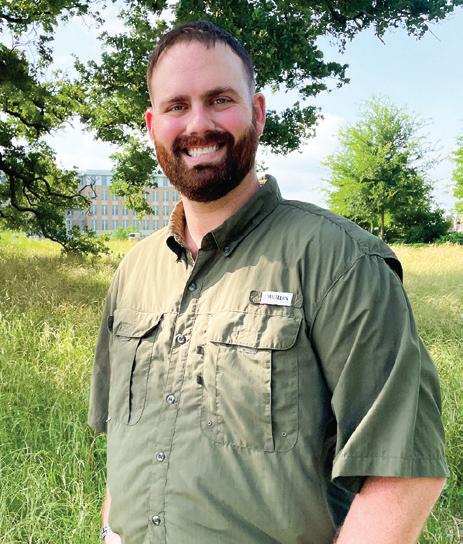
More importantly for landowners will be the discussion of the different reduction methods used to increase success with removing them. Practices like fencing, snares, trained dogs, shooting and aerial gunning are scheduled to be discussed.
A detailed discussion around trapping will be covered, including the best management practices and pitfalls landowners may encounter, as this remains one of the best techniques for catching entire sounders in one effort.
Long will also give an information update on the toxicant Kaput®, and what landowners need to know when using it. Research on its use and important takeaways from the Kaput® label are also included. The program will give landowners new perspectives and options for dealing with feral pigs and some strong management practices for use on their own properties.



‘It’s about getting the right product at the right plant at the right time’
BY CHRISTOPHER GREEN
As the Victoria Farm and Ranch Show approaches, local range and pasture specialist Bryce Macdonald has prepared to offer valuable insight into a common but crucial issue facing area ranchers: broadleaf weed control in pastures.
Speaking from experience working with herbicide manufacturers, Macdonald will host a booth and will give a presentation focused on the detrimental effects invasive broadleaf weeds can have on forages and how proper weed management techniques can help ranchers maintain healthy pastures.
Macdonald explained the ongoing challenge that farmers face when it
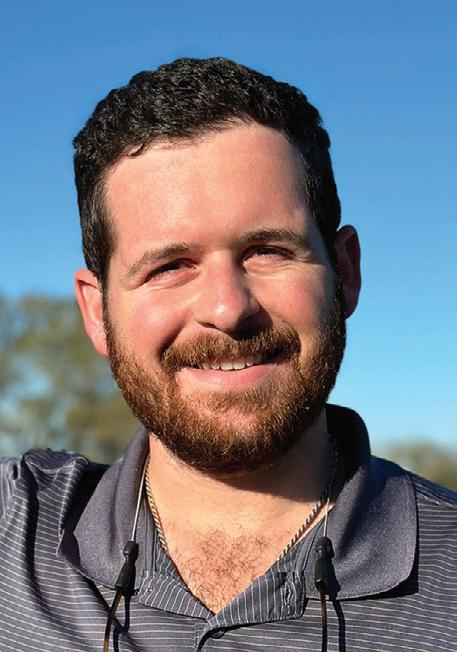
Bryce Macdonald
comes to broadleaf weeds.
“In the pastures around Victoria, we deal with a number of noxious
and invasive weed species,” he says. These weeds, which include species like ragweed, wooly croton and thistles, compete with grasses for critical resources such as sunlight, moisture and soil nutrients. This competition can significantly hinder forage production, which, in turn, impacts the cattle that depend on these forages for growth and nutrition.
“The ultimate goal is to grow more grass,” Macdonald says.
Macdonald works with herbicides in combination with sound grazing management practices to eliminate weeds. Proper weed control, he noted, is crucial for boosting forage production, which, in turn, supports cattle health, beef production and overall ranch profitability.
Macdonald will offer attendees a deeper understanding of the science behind weed control, including how timing, product selection
and management are critical to effective broadleaf weed control and brush management.
“It’s about getting the right product on the right plant at the right time,” he says.
In addition to his work in the field, Bryce will be available throughout the show to answer questions and help ranchers identify weeds on their properties.
He will also offer tailored advice on which herbicides to use for different invasive species.
An annual event, the Farm and Ranch Show draws farmers, ranchers and agricultural experts from around the region to share knowledge, showcase new technologies and offer insights on best practices. Bryce, a resident of El Campo who covers areas around Victoria, has become a key figure in this agricultural community for his expertise in pasture management.

3661..559944.25889 9

The following are highlights from the Sustainable Bobwhite Harvest Project, which we will discuss on Oct. 23 at the South Texas Farm and Ranch Show.
BY DR. ABE WOODARD
For the second year in a row, I have the pleasure of presenting updates from my research at the South Texas Farm and Ranch Show. The research is part of East Foundation’s science programs, which serves our mission of promoting the advancement of land stewardship through ranching, science and education.
A key component of quail management in South Texas is managing harvest. This includes total annual harvest (harvest rate) and the distribution of hunting pressure across seasons (i.e. time) and pastures (i.e. space). The recommended harvest rate in the region is 20% of the fall population, which was derived from population models and not tested in the field.
For this reason, we developed the Sustainable Bobwhite Harvest Project, beginning with baseline surveys in the fall of 2017 on a 15,000acre hunted site and an 11,000-acre non-hunted control site.
After seven years, we are still collecting annual population and environmental trends along with various hunting metrics. We have also expanded the project to now include three control sites and four treatment sites, encompassing over 70,000-acres in Jim Hogg and Kenedy Counties.
n Evaluation of the 20% Harvest Recommendation — So far, the average quail densities on our hunted and non-hunted sites are similar in both the fall (0.32 vs. 0.30 bobwhites per acre) and spring (0.18 vs. 0.17 bobwhites per acre). Although we have similar densities across sites, we have found consistent differences in over-winter population declines (~from November to March) between hunted (49%) and nonhunted sites (38%). This factor represents the complex relationships between harvest and natural mortality, combined with the underlying influence of quail density on reproduction rate and population dynamics.
n Key Hunting Metrics — We have found that hunters spent 50% of their time in the field from mid-December to late January. This period accounted for 53% of covey encounters and 55% of the harvest. The number of coveys found per hour ranged from 2.0 to 3.1 across sites and years, with an overall average of 2.6 coveys per hour. Hunters also retrieved one quail and crippled 0.3 per covey encounter, even when there were no restrictions on the number of quail harvested per covey or pursuits per covey. The average number of gunshots per quail retrieved was 4.7.
n Spatial Dynamics of South Texas Quail Hunts — By tracking each dog and hunting party with GPS technology, we found that dogs would double back and cover areas that had been already hunted 33% of the time, and when two dogs were used, their redundancy rate was 40%. On average, the hunting parties effectively covered ~ 60-acres per hour when hunting with two pointing dogs. Hunted areas had an average brush density of 22% and were within 92 yards of an access road.
Non-hunted areas had an average brush density of 45% and were roughly 180 yards from an access road. According to our model, total hunting pressure decreased by 12% for every 5% increase in brush and 11-yard increase in the distance from access roads.
Managers should focus on the strategic placement of road systems and brush management to optimize
the huntable area available, which, in turn, will help distribute hunting pressure spatially. For more topics and details of the Sustainable Bobwhite Harvest Project, join us at the South Texas Farm and Ranch Show, or visit https://eastfoundation.net/science/ research-projects/sustainable-harvest-and-management-of-northern-bobwhites/.
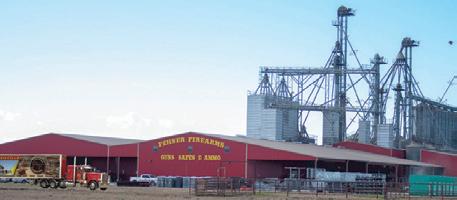






BY KERI WICKLIFFE
Victoria Central Appraisal District is excited to participate in the 2024 South Texas Farm & Ranch show. We will present information on the current ag guidelines and discuss the importance of the cash lease surveys that are mailed annually.
Since agricultural properties are very prominent in our region, there are a variety of ways that a property can qualify for an agricultural special evaluation. The currently approved uses for Victoria County include cattle, sheep, goats, horses, donkeys, exotics, hay, cropland, orchards, vineyards, bees, and wildlife.
There are varying requirements to qualify for each type of agricultural valuation.
We review the agricultural property types, lease rates and expens-
es annually with the assistance of the Ag Advisory Board. A key part of this review process is having accurate information from the local farmers and ranchers about what is typical for our area.
We know with the current economy there has been a need for some farmers and ranchers to change their practices due to ever-increasing expenses. Every two years, the State Comptroller’s office completes a property value study for Victoria County.
One area that is tested is the productivity values based on the current lease and expense information reported by the appraisal district, based on surveys received from property owners.
This information is gathered by mailing out a cash lease survey to all property owners who are receiving the agricultural special
valuation on their property. These surveys are confidential and are not shared with anyone outside of our office, however, the surveys are essential in assisting the appraisal district with development of the productivity values. We are excited to build relation-
ships and exchange information with the local farmers and ranchers to ensure that these properties are receiving the correct valuation.
Keri Wickliffe, RPA, CCA, is the chief appraiser of the Victoria Central Appraisal District.
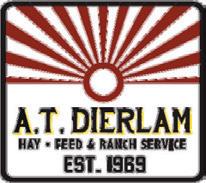





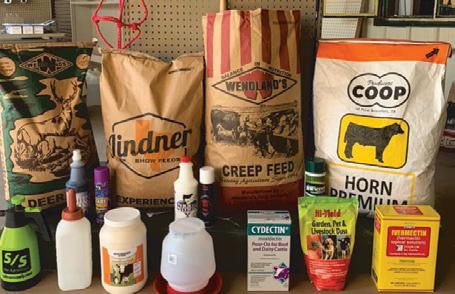

BY DR. JACQUELYN PRESTEGAARD-WILSON
Sustainability in agriculture, particularly in beef production, rests on three pillars: environmental stewardship, economic viability, and social responsibility. These interconnected elements form the foundation of a resilient and responsible industry.
Beef producers have long been stewards of the land, often implementing sustainable practices without fanfare. Traditional wisdom passed down through generations has kept ranches viable while maintaining ecological balance.
However, the industry now faces the challenge of quantifying, communicating, and improving these efforts for a broader audience.
One of the most pressing issues is the environmental footprint of beef production, particularly in terms of greenhouse gas emissions and water usage. While these concerns are valid, it’s essential to recognize that the industry has made significant strides. Today, the same amount of beef is
produced with 70% of the cattle, 81% of the feed, 88% of the water, and 67% of the land in the U.S. relative to 50 years ago. Additionally, many producers are adopting improved genetics and management practices, such as precision feeding and adaptive grazing strategies, to improve resource efficiency.
These efforts reduce carbon footprint and enhance animal health and productivity, showing how the industry is balancing environmental concerns with operational needs.
The economic pillar of sustainability is equally important. Many beef operations, especially family-owned ranches, have thrived for generations by implementing practices that promote long-term viability. Profitability is crucial, as it allows ranchers to reinvest in their land, livestock, and communities. Initiatives like value-added products, direct-to-consumer sales, and niche markets help producers stay competitive in a changing marketplace.
These innovative approaches are critical for maintaining economic stability
while navigating volatile markets and consumer demands.
On the social side, beef production is deeply intertwined with rural culture and traditions.
Ranching isn’t just a business; it’s a way of life for many. Supporting rancher livelihoods involves not only economic incentives but also promoting well-being, mental health, and work-life balance. By fostering a supportive community and offering resources for stress management, the industry is working to enhance the social fabric of rural America.
To maintain the strength of our industry, we must continue to champion several key areas: Economic sustainability: Maintain profitability and market access for producers of all sizes.
Climate impact: Highlight efforts in genetic, reproductive, and nutritional efficiency that are reducing beef’s greenhouse gas emissions.
Land and water use: Implement management practices that conserve
these vital resources in harsh and changing environments.
Animal welfare: Ensure high standards of care throughout the production cycle.
Consumer trust: Educate the public about production practices, ruminants’ environmentally beneficial roles as upcyclers, and nutritional benefits of beef.
Sustainability in the beef industry is not about achieving perfection, but about continuous improvement. As the industry continues to evolve, it’s important to remember that sustainability is a journey, not a destination. By recognizing traditional practices while embracing modern innovations, the beef industry is positioning itself to thrive in the future while addressing the challenges of today.
Jacquelyn Prestegaard-Wilson, PhD, is the Extension Livestock Sustainability Specialist at Texas A&M AgriLife Extension, Department of Animal Science.
BY MELISSA BARTON
The Texas Department of Agriculture is the state’s lead agency in the regulation of pesticide use and application, which includes enforcing the Texas Pesticide Law. This law requires that an individual be licensed or certified by TDA in order to lawfully use a restricted-use pesticide, state-limited-use pesticide and/or regulated herbicides. Once a license has been obtained, agricultural applicators must keep records of pesticide applications for two years and must obtain continuing education units (CEUs) to renew their license.
Melissa Barton, an inspector with the Texas Department of Agriculture, will speak at the South Texas Farm and Ranch show about current pesticide issues in the agricultural in-
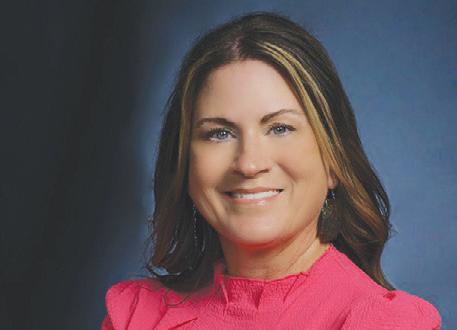
Melissa Barton
dustry. Barton has been a TDA field inspector for the South Texas area for 28 years.
Her 7 a.m. session will focus on pesticide compliance, and the importance of record keeping and pesticide labels. She will present “Pesticide Law & Regulations” during the 7:00-10:00 a.m. session on Oct. 24 in Annex 1 and 2 of
the Victoria Community Center, 2905 E. North St. in Victoria.
The session is designed to help licensed pesticide applicators achieve their continuing education units needed, review recordkeeping practices, and review some of the new pesticide label language.
There are no new laws or regulations, but there are pesticide products with new label language. For example, a licensed applicator must be trained on some of the new products before even using them; not because of the Pesticide Law, but because of the label language that must be followed, by the applicator, when using the product.
As a field inspector, routine inspections and complaint investigations are part of her daily activities. Telling stories and showing pictures of what she
has seen in the field can often open up an audience. The crowd loves to ask questions and make comments when it comes to stories and photographs. Applicators might not always recall a law or regulation verbatim; however, they are likely to recall it after hearing a story of “what went wrong” during an inspection or hearing a story behind the outcome of a complaint investigation.
While the session takes place early in the morning, it is one of the most interactive classes she has every year. She is amazed at the high attendance, and the energy, for such an early session. The stories, conversations, and even a laugh or two, make for a productive (and entertaining) morning in the world of pesticide applicators and agriculture.
BY MADISON O’HARA
Stephen Biles is an entomologist whose job is to help farmers with challenges they may face. Many of those issues are insect-based.
His two topics for the South Texas Farm and Ranch Show will, for one, explore the system management for integrated pest management and two, integrated pest management for agriculture.
He will also discuss research he has conducted over the past summer.
”I’ve spent a lot of time in cotton fields. Insect diseases with cotton is more of an issue than with corn,” Biles says.
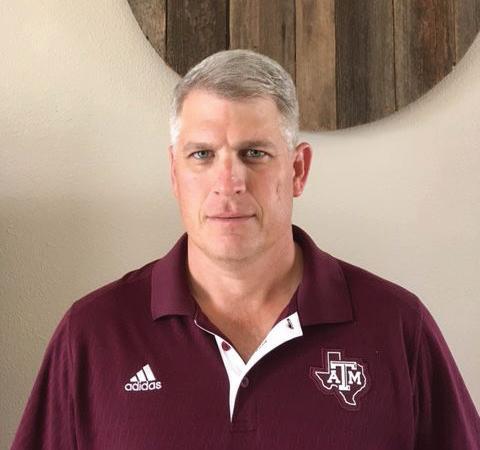
Cotton leafhoppers aren’t a new problem for farmers. Cotton leafhoppers have been in South Texas
since 1930s, but they aren’t invasive.
”They’re a bigger problem in bacterial and viral disease than they are in yield,” Biles says.
Cotton leafhoppers can cause significant yield losses in places like Central and South America. Biles says in Brazil, cotton leafhoppers cause 30-to-40% yield loss from disease. With good disease management, however, farmers can lessen their impact on their crops.
Looking for diseases and finding solutions in a reasonable fashion is Biles’ goal, which goes beyond simply managing Cotton leafhoppers. Corn leafhoppers are also an issue but less of a problem in the Cross-
roads region when compared to cotton.
”They’re not a common pest. Farmers often forget about them because they’re only a problem every 10 to 15 years,” Biles says.
Biles hopes his presentation on Cropping System Management Wednesday will be a refresher for farmers about leafhoppers. His second topic, integrated pest management, will shed some light on some new information for guests.
Stephen Biles is an Integrated Pest Management Agent in Victoria, Calhoun and Refugio Counties with AgriLife Extension.
BY MADISON O’HARA
Dr. Jacob Dykes with Texas A&M AgriLife Extension has studied white-tailed deer for the past decade.
“Some of my research includes evaluating the effects of heat on deer and cattle interactions and resource use across the landscape, evaluating the influence of nutrients in deer diet selection, assessing deer responses to brush management, and investigating the importance of shade quality to deer,” Dykes says.
Along with his research, Dykes is also a deer hunter and has practiced wildlife and habitat management for 20 years.
During the South Texas Farm and Ranch Show, Dykes will discuss white-tailed deer management and habitat. He will cover deer biology, which includes their reproductive cycles, antler growth, gut morphology and nutrition. Dykes will dig into the numbers and discuss population metrics, including herd composition, age structure, sex ratios, nutrition and harvest recommendations.
“White-tailed deer are one of the world’s most important wildlife species, economically and ecologically.
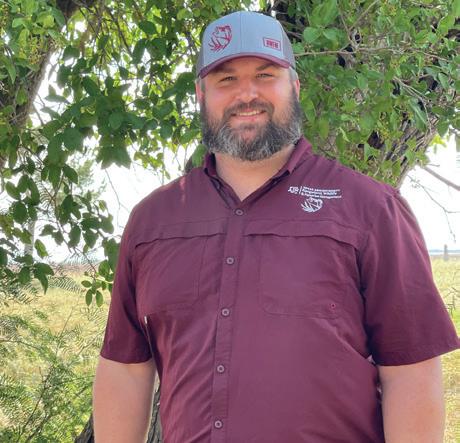
They are the most sought-after big game species in Texas,” Dykes says. Deer hunting-related expenditures contribute over $9 billion dollars annually to the Texas economy. Not only that, but deer also are considered a keystone species. This means they play a vital role in how the ecosystem they inhabit functions because they significantly affect woody and herbaceous vegetation. In regards to the food chain, deer are an essential food source for many other animals.
Dr. Jacob Dykes is an assistant
professor and extension wildlife specialist in Texas A&M AgriLife Extension’s Department of Range-
land, Wildlife and Fisheries Management. Dykes will present his topic on Wednesday afternoon in Annex 4.
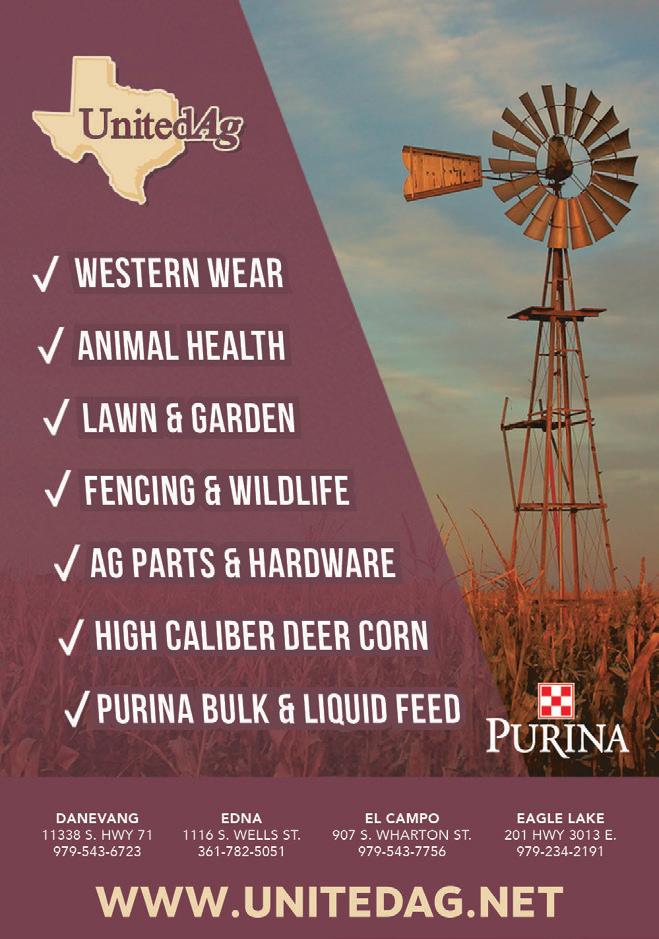
BY MICHAEL MILLIORN
Dr. Karl Harborth, assistant professor and extension livestock specialist, will cover preventative medicine, vaccination, deworming and other cattle health information at the 2024 South Texas Farm & Ranch Show.
It is crucial for cattle owners to work with veterinarians to set up a health protocol for their operations so they may ensure their herd maintains proper health. Dr. Harborth’s presentation will include how nutrition can be used to correct deficiencies in cattle.
“Health is important for humans [and] cattle or any kind of lifeform,”
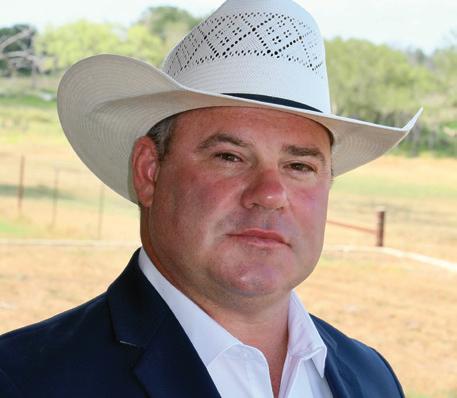
Harborth says. “[We must incorporate] as much preventative medicine as we can in our operations for cattle
coupled with making sure there aren’t any nutritional stress issues [and] minimize environmental stressors.”
Cattle ranches operating along the gulf coast have their herds outside more days out of the year and owners need to be aware of their desired temperature.
“We use different breeds of cattle in our part of the world to help with [temperature regulation],” Harborth says. “We can raise most types of cattle down here. The big thing for me is just to evaluate [owners’] current protocols, programs or what they’re doing.”
Dr. Harborth will present on what
owners can add to their programs to make them better for the cattle. Many owners do not have a set nutritional and environmental plan that will keep their herd in a healthy condition. Having a plan in place will make sure owners don’t overlook big health issues.
There is a need for cattle owners to build a veterinarian-client relationship. Establishing this relationship is extremely important as the vet can help make decisions and provide care for cattle.
“From a nutrition standpoint, [owners need to] make sure the cattle are in acceptable status,” Harborth says.
BY DR. YURI CALIL
At the 2024 South Texas Farm and Ranch Show, I’ll share insights on the beef cattle market outlook to help ranchers navigate key supply, demand and pricing trends.
Cattle prices have remained elevated throughout 2024, primarily driven by supply shortages resulting from past droughts and reductions in herd sizes. These tight inventories have led to record-high calf prices. Despite this pressure, beef production has held steady, thanks in part to unseasonably high steer-dressed weights during the summer. Additionally, decreased corn prices from last year and improved pasture conditions have contributed to a more favorable production environment. However, there are still limited signs of significant herd expansion, indicating that tight supplies may persist in the near term.
Demand for beef has remained strong despite high interest rates and slow economic growth, which have tempered consumer spending. The market’s preference for high-quality beef has helped push retail prices to record levels, reflecting resilient consumer demand. On the trade side, while beef exports are projected to decline, imports are expected to increase as the domestic market works to fill
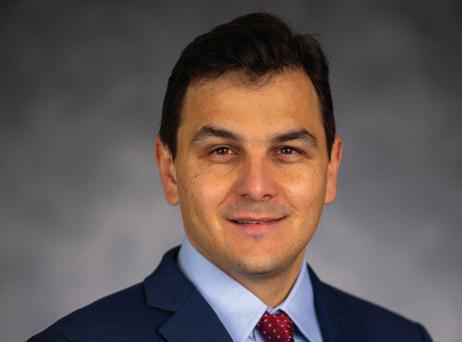
to remember that the cattle market is cyclical. As such, ranchers should keep an eye on these trends and make informed decisions to enhance longterm profitability, balancing the immediate gains with strategic planning for the future.
By understanding these market dynamics, ranchers can better position themselves to capitalize on opportunities while preparing for potential market shifts.
supply gaps.
The combination of tight supplies and stable demand has kept prices elevated. There are early signs of herd expansion, but the pace of this recovery remains uncertain. While current high prices may offer short-term profitability for ranchers, it’s important




BY MICHAEL MILLIORN
Dr. Joshua McGinty, associate professor & agronomist, will give an update in the row crop section on the last 12 months of field trials run at the AgriLife research station in Corpus Christi as it relates to row crops at the 2024 South Texas Farm & Ranch Show.
His office conducted tests on varieties of new crops, products, fertilizers and herbicides as well as work done up and down the coast. In previous years, Dr. McGinty has taken the most interesting and relevant findings from the last year, and summarized it for local growers.
In his presentation, he will report on the crop variety testing results done in most of the row crop counties of South Texas, done with the help of county agents. He will show the necessary procedures growers should take and what new varieties of products are performing well. The most impactful thing he will

present is the report that will help growers make decisions on what seed they should order and plant in 2025.
“We’ll talk a lot about that and talk a little bit about some alternative crop testing we’re doing, so outside of the normal cotton, corn and sorghum that’s grown, [we’ll be] looking at kind of novel species,” McGinty says.
Additionally, Dr. McGinty will present three years of information


around biofuel production. There has been a lot of interest in producing diesel and aviation fuel from some winter oil seeds.
“I also do a lot of weed science work, testing new herbicides [and learning] a little bit about some of the herbicide resistant weed issues that have cropped up in South Texas,” McGinty says.
Dr. McGinty will give a second presentation later in the day at the Cattleman’s College on livestock and hay producer oriented information. He will present a 12 month calendar detailing what producers should be doing to plan for their upcoming year if they’re growing crops such as Bermuda grass hay or Bahia grass for grazing.
The calendar, beginning in January, will cover what growers need to do before greening up in late winter or early spring, what to do during the spring rainy season, how to manage weeds coming out of the
typical summer drought up until everything goes dormant at the end of November or December.
“[I’ll] go quickly through a high altitude picture for folks that might be a little new to managing a pasture to give them a broad understanding of the things they need to do to keep weeds from becoming a problem and choking out the grasses,” McGinty says.




